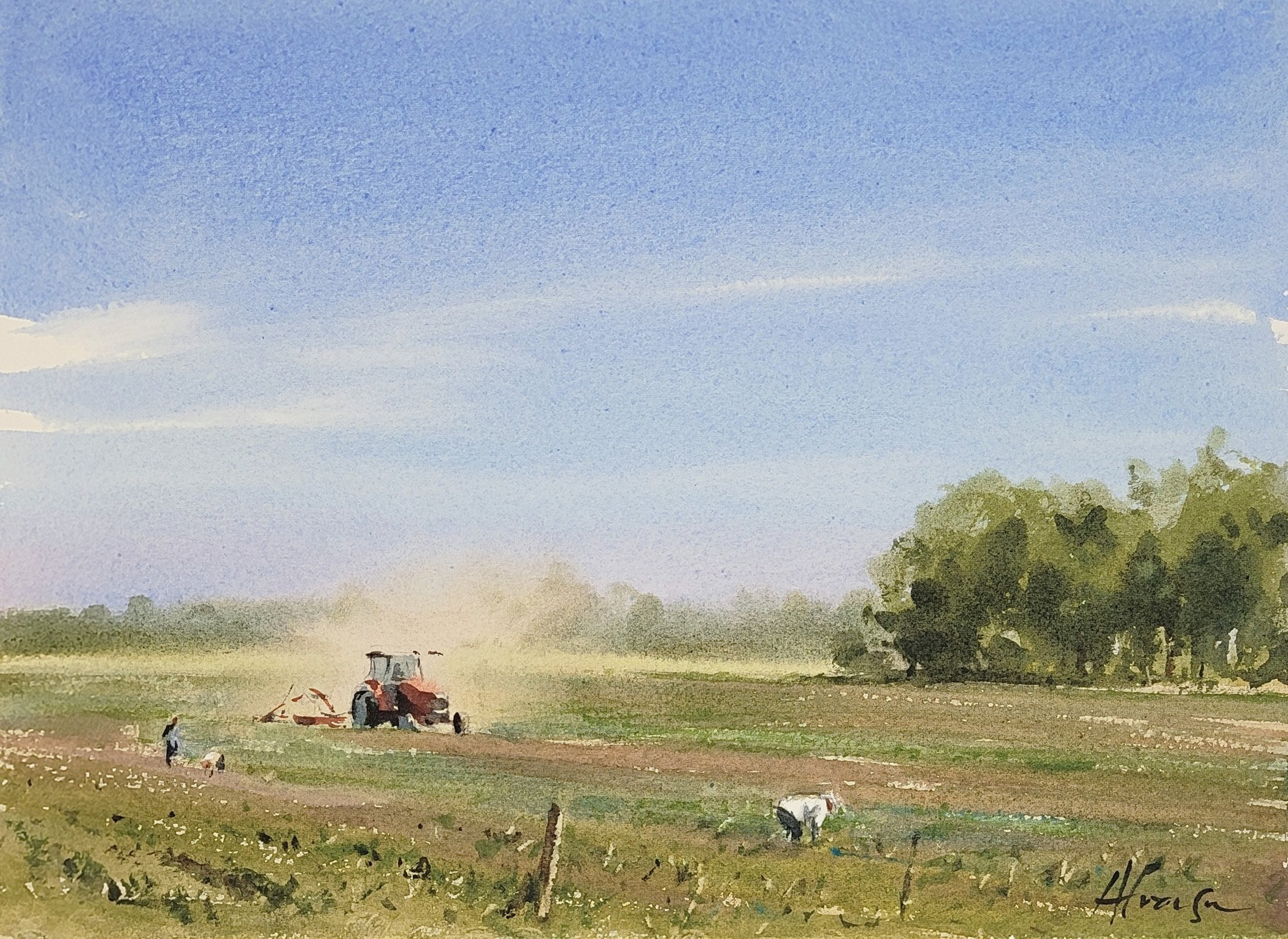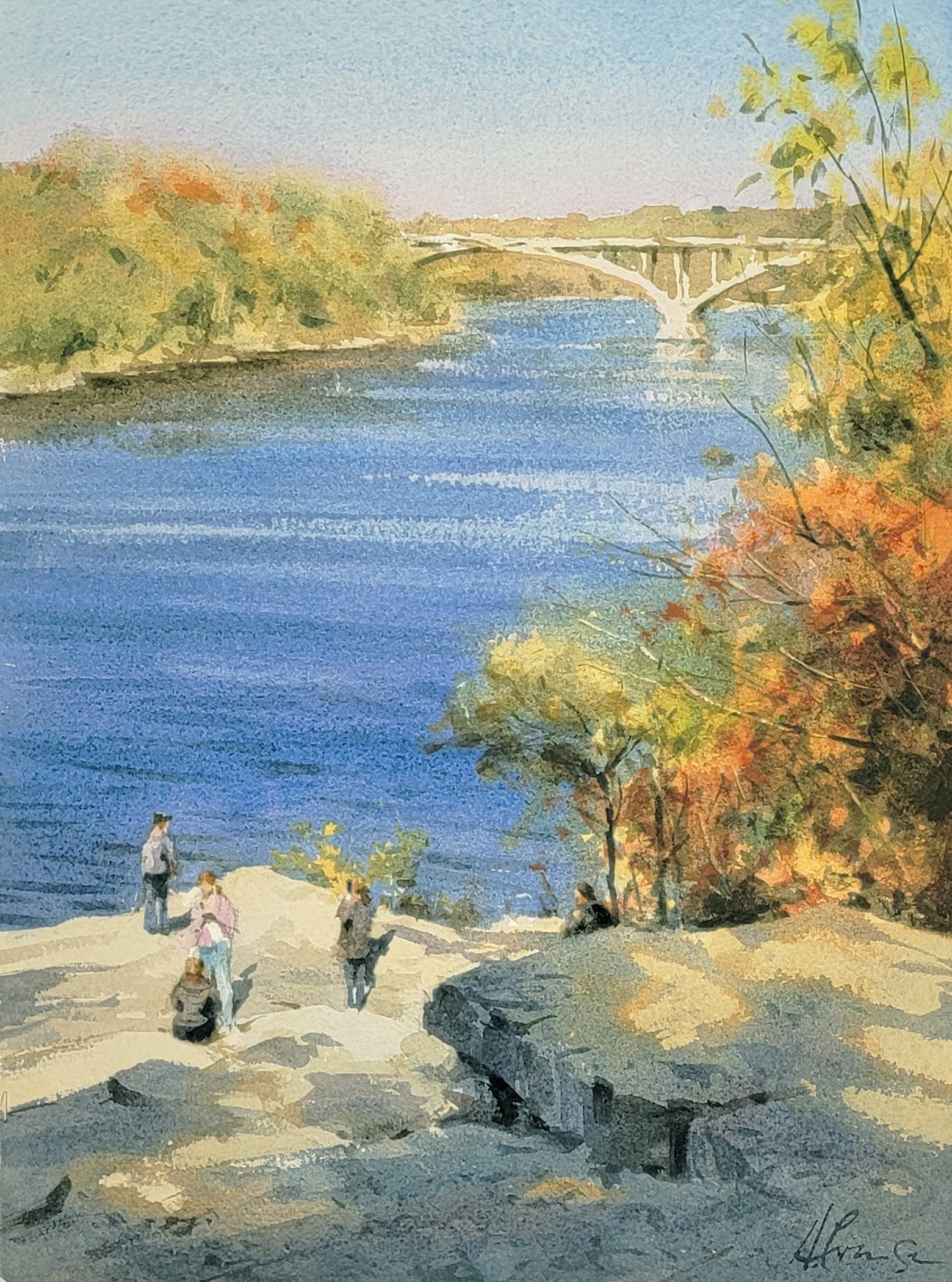Andy Evansen: Watercolor Workshop
This class is full. Accepting wait list only.
There seems to be a never-ending quest to loosen up in watercolor and it’s probably the most common goal of students. It’s easy to fall into the trap of putting too much into your paintings; and editing out the non-essential whether working from photo reference or painting on location is vital. As I tell my students, what you leave out of a painting is as important as what you put in.
Painting loosely doesn't just 'happen', it comes from gaining a comfort level with your skills and materials over time. However, there are techniques that can speed up this process.
My workshop will focus on using value studies from the outset to identify the large shapes in a scene. These large shapes provide the artist with opportunities for lost edges when painting in watercolor, which is essential if we are to take full advantage of the medium. Too often the 'found edges', or details, take over the painter's thinking process, and the result is a tight watercolor.
We will move on toward color paintings using value studies as our guide, and complete color painting lessons together. Demonstration paintings will be done by Andy to reinforce the lessons.
In order to loosen up it is imperative to have a clear vision of what you want to accomplish with your painting and then execute it quickly. This class will give you the tools and confidence to do just that."
Class size limited to 20 people. $375 for the 3 day workshop.
To register, contact Deb Zeller: deb@parleylake.com
Learn more about Andy Evansen.
Learn more about other workshops led by Andy.
Andy Evansen Watercolor Workshop supply list
-Paper; please have a 9x12 pad of watercolor paper (Kiliminjaro from Cheap Joe’s works well, or Arches makes a 9x12” pad also) for value studies as well as good quality 100% cotton paper, quarter sheet size, for paintings.
(some recommended papers are Saunders, Hahnemuhle, Arches, Baohong, Winsor Newton)
*You may want to bring a 12x16 block of cold press for the exercises we will do together.
-Paint; Tubes of paint, not the dried up cakes in pans.
My palette consists of Neutral Tint, Paynes Gray, Ultramarine Blue, Cobalt Blue, Cerulean Blue, Raw Sienna, Burnt Sienna, Quinacridone Gold, Alizarin Crimson, Cadmium Red, Cadmium Lemon. (*These are suggested colors, you’re welcome to
use what you have ) Most are Winsor & Newton, but I’ve found Holbein’s Raw Sienna to be better. I do also use Lavender, made by Holbein, but it’s opaque and has some white in it so purchase if you wish but be aware.
-Palette; must have good size mixing area. The John Pike palette is wonderful.
-Brushes; Use what you’re comfortable with, but I typically use a squirrel hair mop brush for big early washes (Silver makes a good variety of Black Velvet round watercolor brushes available from many art supply venues), a size 12 or 14 sable-type for the intermediate washes (Cheap Joe’s Pseudo Sable is a good option), and a smaller size 10 synthetic for detail work.
-No. 2 pencil and kneaded eraser
-Water container
-Household sponge for drying your brushes and a natural sponge for wetting your paper. Also, it’s nice to have a small plastic container for your household sponge so it doesn’t leak water all over the table.
-Artist’s tape, ½” wide


